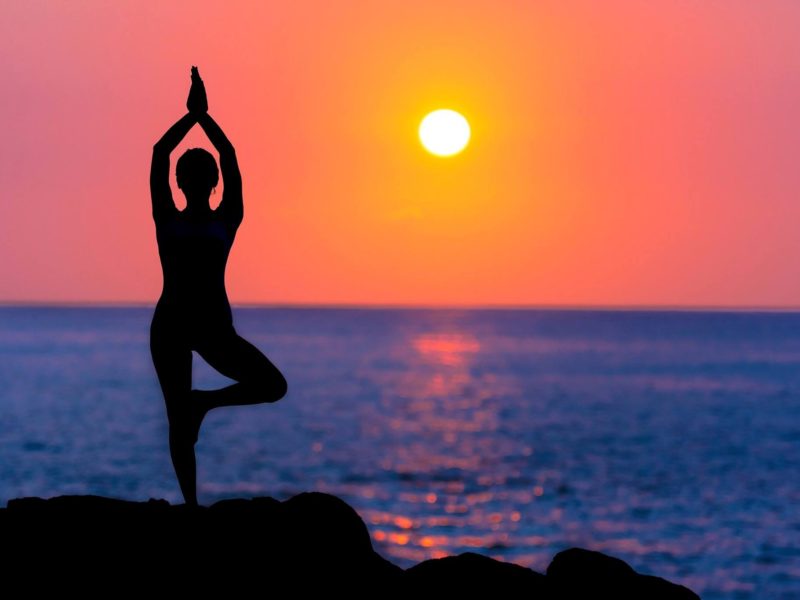Arthritis is the medical term used to describe more than 100 distinct conditions that impact the joints and their surrounding tissues. Just over 54 million adults in the United States have already been diagnosed with some form of the disease, and that number is expected to soar to 78 million — or a full 26% of American adults — by the year 2040.
It’s hard to truly appreciate just how much you depend on your joints until they’re undermined by chronic arthritis — arthritis-related pain and stiffness can transform even the simplest task, chore, or endeavor into major challenges.
But whether you find it more difficult to climb the stairs, get in and out of the car, take your energetic dog for a walk, weed the garden, or simply open a jar, it’s crucial to keep your body — and your joints — moving.
That’s because getting up off the couch and engaging in regular exercise is one of the best ways to lessen the physical effects of arthritis and keep your condition under control. Here’s what you should know.
Exercise therapy for joint pain
Although arthritis symptoms can vary in type as well as severity — both among individuals and from day to day — having stiff, achy joints is a top complaint. For some people, arthritis pain is limited to one or two joints; for others, the problem affects virtually every joint in their bodies.
Allowed to progress unchecked, arthritis and chronic joint pain often leads to the kind of restricted mobility that makes routine tasks intensely uncomfortable or even impossible.
While it’s tempting — and to some degree, instinctive — to want to protect stiff, painful joints and avoid movements that cause discomfort, adopting a sedentary lifestyle only serves to diminish your strength, minimize your flexibility, deplete your energy, and further limit your mobility. In fact, inactive arthritic joints are far more likely to become increasingly stiff or even frozen.
Regular exercise, on the other hand, helps strengthen and tone the muscles and connective tissues that surround and support your joints. It also increases joint lubrication and decreases inflammation to help take the edge off chronic arthritis pain and stiffness, naturally.
Even better, sticking to a consistent fitness routine can help you reach and maintain a healthy body weight, which helps reduce stress on all your joints — especially those in your hips, knees, ankles, and feet.
Joint-friendly exercise options
Participating in a low-impact exercise program is the best way to support arthritic joints as you build muscle, improve flexibility, and increase endurance. Top joint-saving workouts include:
Swimming and water aerobics
If you have access to a pool, take advantage of it — getting in the water is one of the best things you can do for stiff, achy joints. Whether you swim, do water aerobics, or simply walk back and forth across the shallow end, water exercise is ideal for your joints because it allows you to strengthen, tone, and stretch your muscles without impacting or overworking your joints.
Biking and indoor cycling
On top of giving you an excellent low-impact aerobic workout, biking and indoor cycling help stabilize your knee joints by toning your quadriceps (thigh muscles) and improving your overall leg strength. Hopping on any kind of bike also encourages increased lubrication in your hip, knee, and ankle joints.
Walking and hiking
Walking is very nearly the most perfect form of exercise — you know exactly how to do it, it doesn’t require a gym membership, and you can adjust your intensity as you see fit. Simply slip on a pair of walking shoes and head out for a walk around your neighborhood. To kick it up a notch, take your walk off-road and hike over a more varied terrain, or use a pair of trekking poles to get your upper body involved.
Body weight exercises
Classic body weight exercises including squats, lunges, pushups, planks, and bridges, can help strengthen and tone every major muscle group in your body. Because these simple resistance exercises can be easily modified to accommodate any fitness level, they’re ideal for beginners and advanced exercisers alike.
Stretching and gentle yoga
While you may think stretching is merely a way to warm up before a workout or cool down afterward, focused flexibility training is an excellent way to decompress and stabilize stiff, achy joints. Whether you take a gentle yoga class or develop your own stretching routine, it’s important to respect your physical limits.
To find the joint-saving workout that’s best for you, call our Greenbrae, California office today, or use the easy online tool to schedule a visit with Dr. Landfield any time.
References:
First Med Marin: Arthritis
https://www.landfieldmd.com/services/arthritis
CDC: Arthritis-Related Statistics
https://www.cdc.gov/arthritis/data_statistics/arthritis-related-stats.htm
Health: 16 Gentle Exercises for People with Arthritis
http://www.health.com/health/gallery/0,,20706071,00.html#arthritis-workouts-0
Arthritis Foundation: 51 Ways to be Good to Your joints
https://www.arthritis.org/living-with-arthritis/pain-management/joint-protection/joint-health.php
Mayo Clinic: Exercise Helps Ease Arthritis Pain and Stiffness
https://www.mayoclinic.org/diseases-conditions/arthritis/in-depth/arthritis/art-20047971
AARP: 5 Low-Impact Exercises for Joint Pain
https://www.aarp.org/health/conditions-treatments/info-2016/joint-pain-exercise-yoga.html
Harvard Health Publishing: Exercise — An Effective Prescription for Joint Pain
https://www.health.harvard.edu/pain/exercise-an-effective-prescription-for-joint-pain










 How to Live a Normal and Healthy Lifestyle with High Blood Pressure
How to Live a Normal and Healthy Lifestyle with High Blood Pressure
Leave a Reply